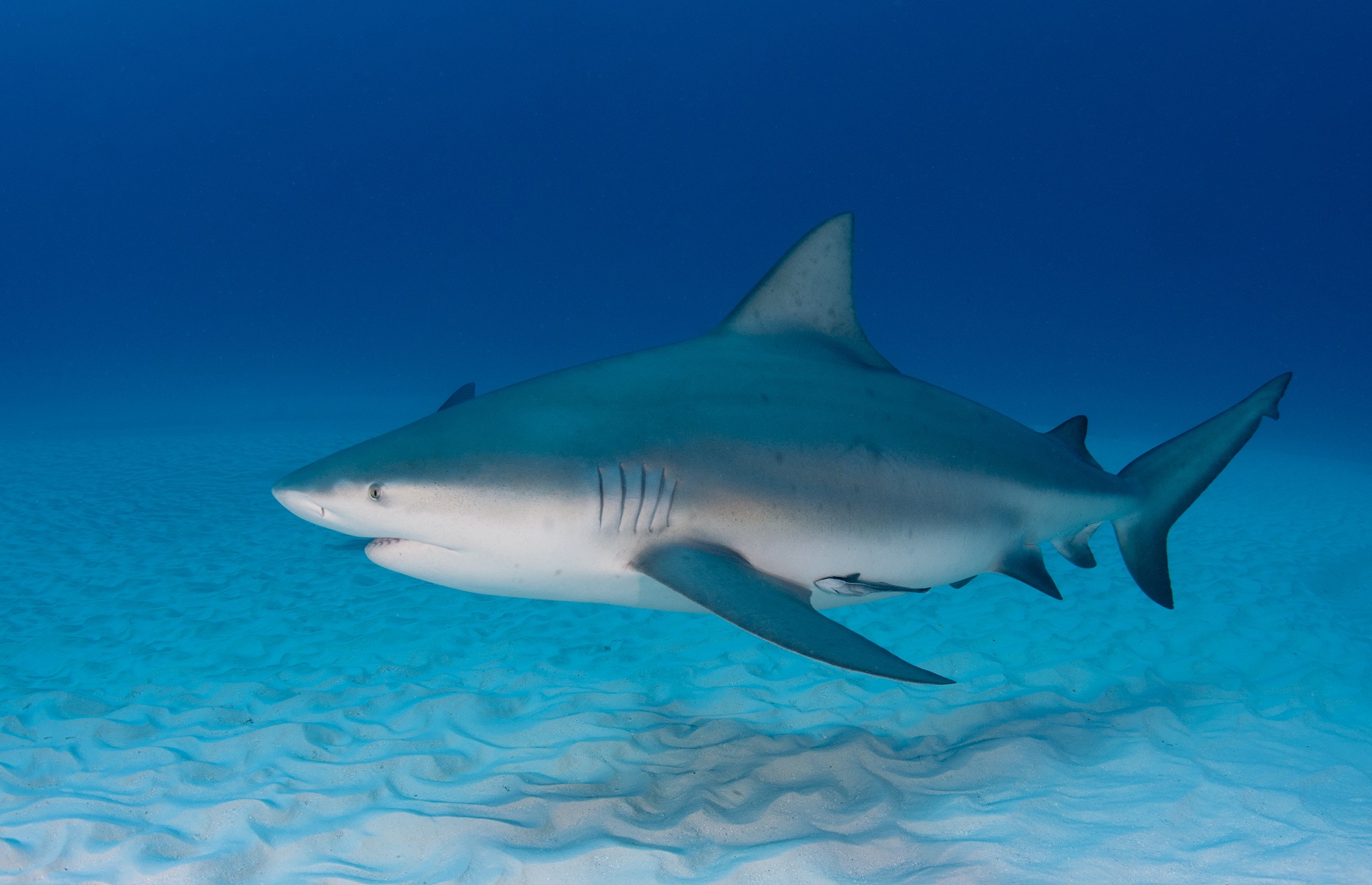
by Erik Lovestrand | Jun 23, 2018
You might get that impression from the movies but if you look at the data you will see quite a different story. With nearly fifty species identified in the Gulf of Mexico, an encounter with a shark is eminent if you spend much time in our coastal waters. So, let’s get the “scary” stuff out of the way first and finish with the more interesting facts for our much-maligned “toothy” friends.
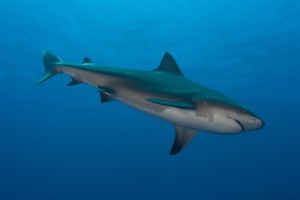
The Bull Shark is considered one of the more dangerous sharks in the Gulf. This fish can enter freshwater but rarely swims far upstream. Photo: Florida Sea Grant
The most recent data from the University of Florida’s International Shark Attack File shows that unprovoked attacks have occurred in 26 of Florida’s 35 coastal counties, from 1882 to present. Florida is the hotspot in the U.S. which makes sense with our 1,300-plus miles of coastline. Volusia County has recorded the most incidents at 299. Brevard County is second (144) and Palm Beach County third (75). Do you have any idea how many people have been in the water in these three counties since 1882? Let’s just say, a lot; if sharks were hunting for people, they would have found more of us by now.
In the coastal counties of the Florida Panhandle, numbers are much lower with Bay County having the most incidents at 9. Numbers drop from there with Escambia at 6, Okaloosa at 4, Gulf and Franklin at 2, Santa Rosa and Walton at 1 and none from Wakulla down through Pasco; remember, since 1882. Species most often involved have been bull or blacktip sharks (20% each), spinner at 16% and hammerhead at 13%. Believe it or not, the next highest is nurse sharks at 7%. Compared to drowning fatalities from 1992-2000, sharks loose, 2 to 135.
Okay, now for some more interesting facts about our Gulf of Mexico sharks. Some of you have heard about the encounter that Grayson Shepard (of Apalachicola) had with a great white back in 2015. If you want to see his amazing video visit this link. Even though great whites are considered a cold-water species, scientists have known for a long time that they do visit the Gulf of Mexico. Their incredible migratory nature has been studied in greater detail of-late. An 8.5 foot juvenile female that was radio-tagged off Hilton Head South Carolina travelled to Nova Scotia Canada before turning around and going south all the way around the tip of Florida and into the Gulf of Mexico. The most northerly “ping” picked up by the satellite receiver was north of Tampa on January 31, 2018. Savannah (her given name) is currently back on the east coast near where she was tagged by researchers. Vist this website to follow Savannah’s incredible journey.
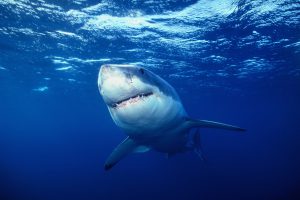
The Great White shark.
Photo: UF IFAS
Another impressive shark species that occurs in our Gulf waters holds the title of “world’s largest fish!” Whale sharks can reach lengths of fifty feet and weigh around 20 metric tons. Most of the sightings in the Gulf have proven to be juveniles but occasional aggregations happen around abundant plankton resources. One chance encounter by scientists from the Mississippi-based Gulf Coast Research Laboratory, documented a large number of whale sharks feeding near the surface. Plankton samples revealed a rich concentration of fish eggs from recent spawning activity of little tunny and crevalle jack. Aggregations numbering near 150 individuals, feeding on abundant plankton, have been reported in the nutrient-rich waters near the Mississippi River drainage.
Sharks in the Northern Gulf of Mexico, just as alligators in our lakes and rivers, deserve our respect and a balanced conservation-minded attitude. They are an incredible resource that have vital connections to many other species in our marine environment. They are also one of the most thrilling creatures on the planet when you get to meet one up close. Just please use some good sense and mind those pearly-white teeth if you catch one on a line. Even a cute little wild mouse will bite you when handled but the outcome is slightly more concerning with sharks and alligators.
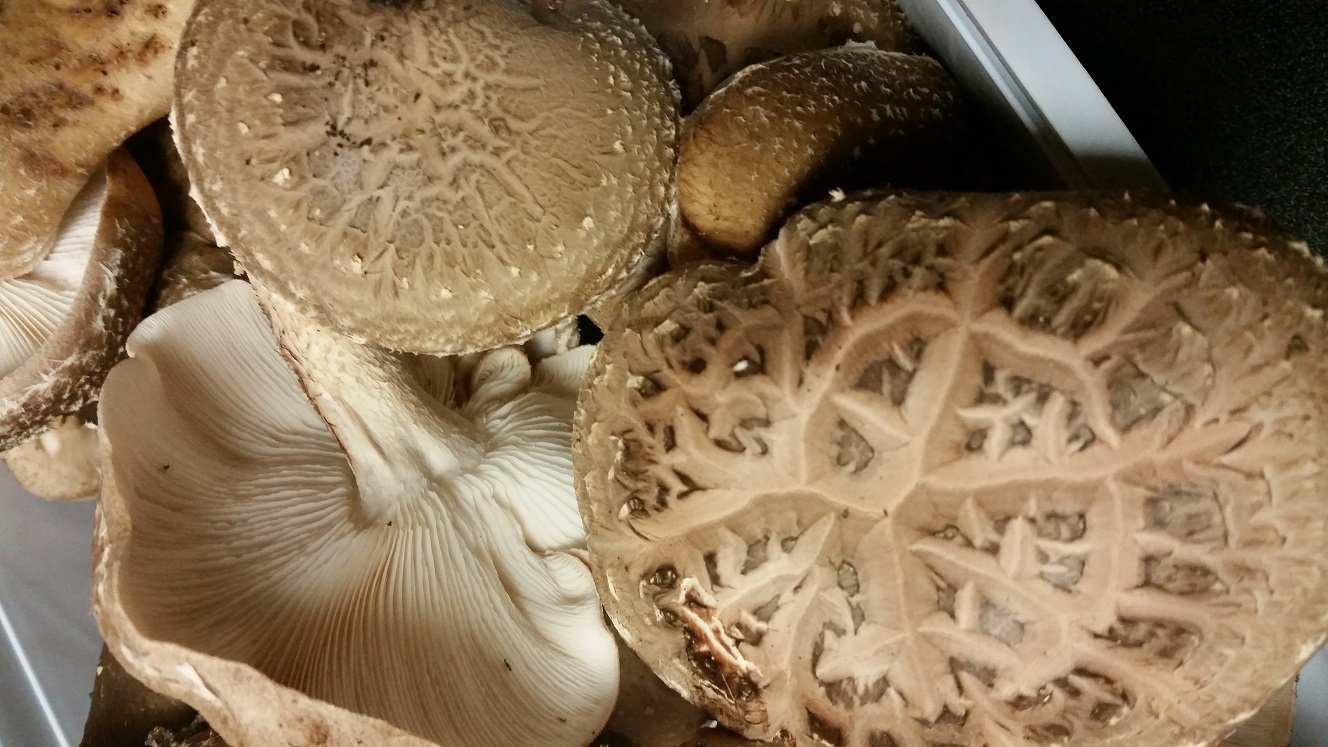
by Erik Lovestrand | Jun 8, 2018
Have you ever eaten a wild mushroom and then wondered afterwards if you might have made a mistake? If you are prone to forage outdoors for tasty treats from nature, I’ll bet you have. The problem is, unless you are harvesting one of a few “foolproof” species of edible fungi, positive identification can be very challenging. Oft-times wild mushroom harvesters take a notion to branch out and seek new varieties that are outside of the identification capabilities of the novice mycologist. This is where folks begin treading on dangerous ground and may be at risk for gastrointestinal distress;
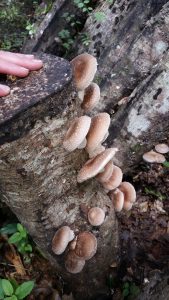
Properly inoculated shiitake logs can be quite productive
with symptoms that may range from a mild upset stomach to permanent damage or death.
Yes, death!
Everyone has heard about poisonous mushrooms but few people realize that some of the deadliest species are look-alikes for some of the tastiest species. And you would not be able to distinguish the difference by nibbling a sample. Even a small sample of some of the “bad actors” can be lethal, leading to painful symptoms and organ failure. If this scares you out taking a risk then this article has served a good purpose.
If you wish to enjoy a safe, tasty experience with a highly-prized mushroom species, just take up the hobby of growing your very own shiitake mushrooms. Shiitake comes from the root Japanese “shii” (meaning oak) and “take” (for mushroom). Shiitake mushrooms are a billion dollar industry in Asia with 92% of the world production coming from Japan. Many culinary and medical uses have been identified. This species was only available as dried mushrooms in the US until 1972 but with the removal of a ban on importing live fungi a commercial industry has blossomed.
Hardwood logs are the key, with oak being a preferred tree species. There are six considerations if you are to be successful:
1. You must acquire living Shiitake inoculum (the mycelial or rooting stage) already growing on a wood medium, usually hardwood dowels or sawdust (internet search will yield many providers).
2. Proper cutting and handling of the logs to be inoculated is important. Cut trees close to the time of inoculation (2 weeks max.), 4-8 inch diameter and 3-4 feet long.
3. Inoculate by drilling holes in the logs, inserting the living inoculum/spawn and seal the holes with melted wax to retain moisture. A single log may have 30-40 holes drilled in it.
4. Place logs in a shady/moist environment (i.e. under the canopy in a woodlot with at least 75% shade).
5. Maintain logs by wetting during dry spells. A sprinkler or mister run for a couple of hours a day works well.
6. Proper harvesting and storage is most important and information is available in many places online.
Shiitake fruiting is usually triggered by changes in temperature and humidity so spring and fall are key times to check your logs. It does not take long for a mushroom to go from the early “pinning” stage to mature, so weekly checks are advised. Significant tropical weather events will also stimulate fruiting. Logs produce mushrooms for at least two years, until the nutrients in the wood are used up.
Don’t be in a hurry though, as the full colonization of the log by the mushroom mycelium will take up to 9 months before mushrooms begin to appear. Remember, beware the risks of harvesting wild fungi. A small-scale shiitake growing operation is a safe alternative for getting your “mushroom-fix.” Also, be ready to compete with a squirrel or two for your crop as they know a good thing when they see it too.
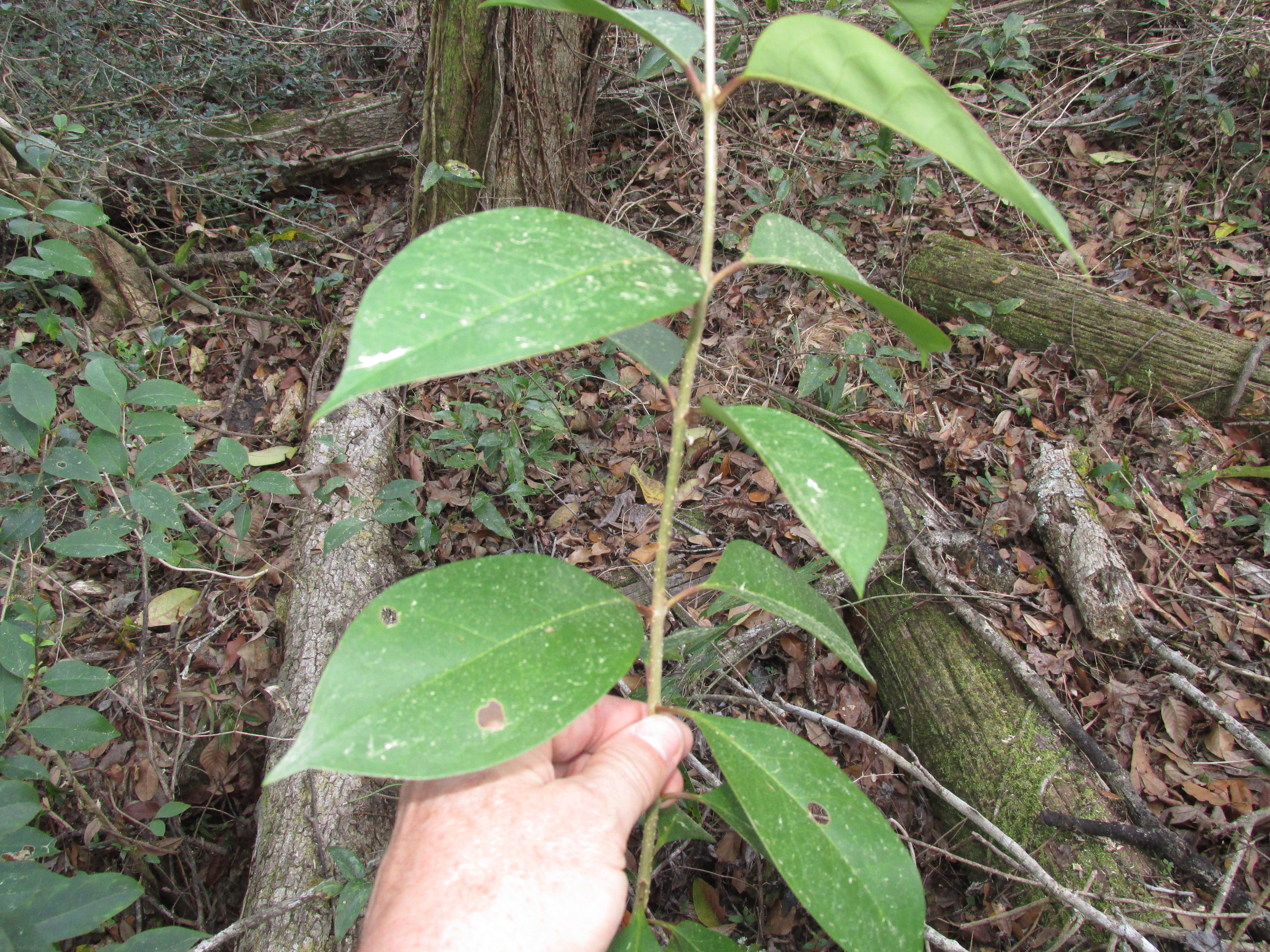
by Erik Lovestrand | Feb 26, 2018
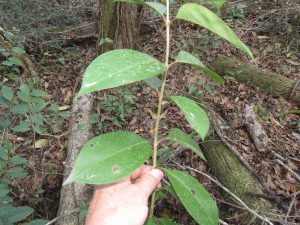
Tree privet in Wakulla County. The large shrub is rapidly becoming a dominant species in the understory of this woodlot. Photo Credit: Erik Lovestrand
Keep your eyes open for this Category 1 FLEPPC invader. When the Florida Exotic Pest Plant Council deems a plant a Category 1, it means that the plant is capable of altering native ecosystems by displacing native species. Other common names for this Ligustrum include glossy privet and wax-leaf ligustrum, which are fitting descriptions of the large, shiny leaves arranged oppositely on the stems. Belonging to the olive family (Oleaceae), this small tree can grow to 10 m tall and form a dense shady canopy above the forest understory. It has been documented in several Central to North Florida counties and has also escaped in Pennsylvania, Virginia, North Carolina, Texas, Georgia Alabama, Mississippi, Louisiana, Maryland, California and Hawaii, as well as other countries (K.A. Langeland, et al. University of Florida-IFAS Pub SP 257, 2008).
The typical growth pattern often involves multiple trunks with very smooth bark and twigs being dotted with numerous corky lenticels. Once a parent plant is established it will produce copious clusters of dark drupes that will blanket the understory with small seedlings in a short time due to very high germination rates. Birds are a likely dispersal mechanism also. It prefers a mesic hardwood hammock setting in North Florida and when cut down, readily re-sprouts with many new stems from the trunk. An herbicide application to stumps is a must for control. These plants can gain an advantage in many ways in our native habitats. They tend to be salt tolerant and are able to withstand fire well. They can grow in acidic to alkaline soils but do not do well in wet soil conditions. They will commonly colonize river banks though where the higher levees provide a deeper, sandier footing.
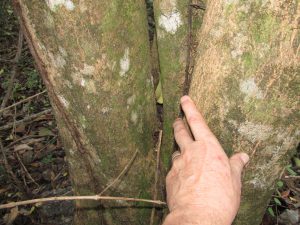
Large tree privet trunk in Wakulla County. Photo Credit: Erik Lovestrand
There are two other non-native ligustrums established in North Florida also but they are easy to separate if you look closely at the foliage. The plant commonly called Chinese ligustrum (l. sinense) has much smaller leaves. The more similar looking Japenese ligustrum (l. japonicum, also called wax-leaf privet), can be distinguished by the lack of a thin translucent margin along the leaf edges. This is easy to see if you hold a tree privet leaf against a backlit setting.
For more information on Ligustrum lucidum, visit the UF IFAS Center for Aquatic and Invasive Plants Directory
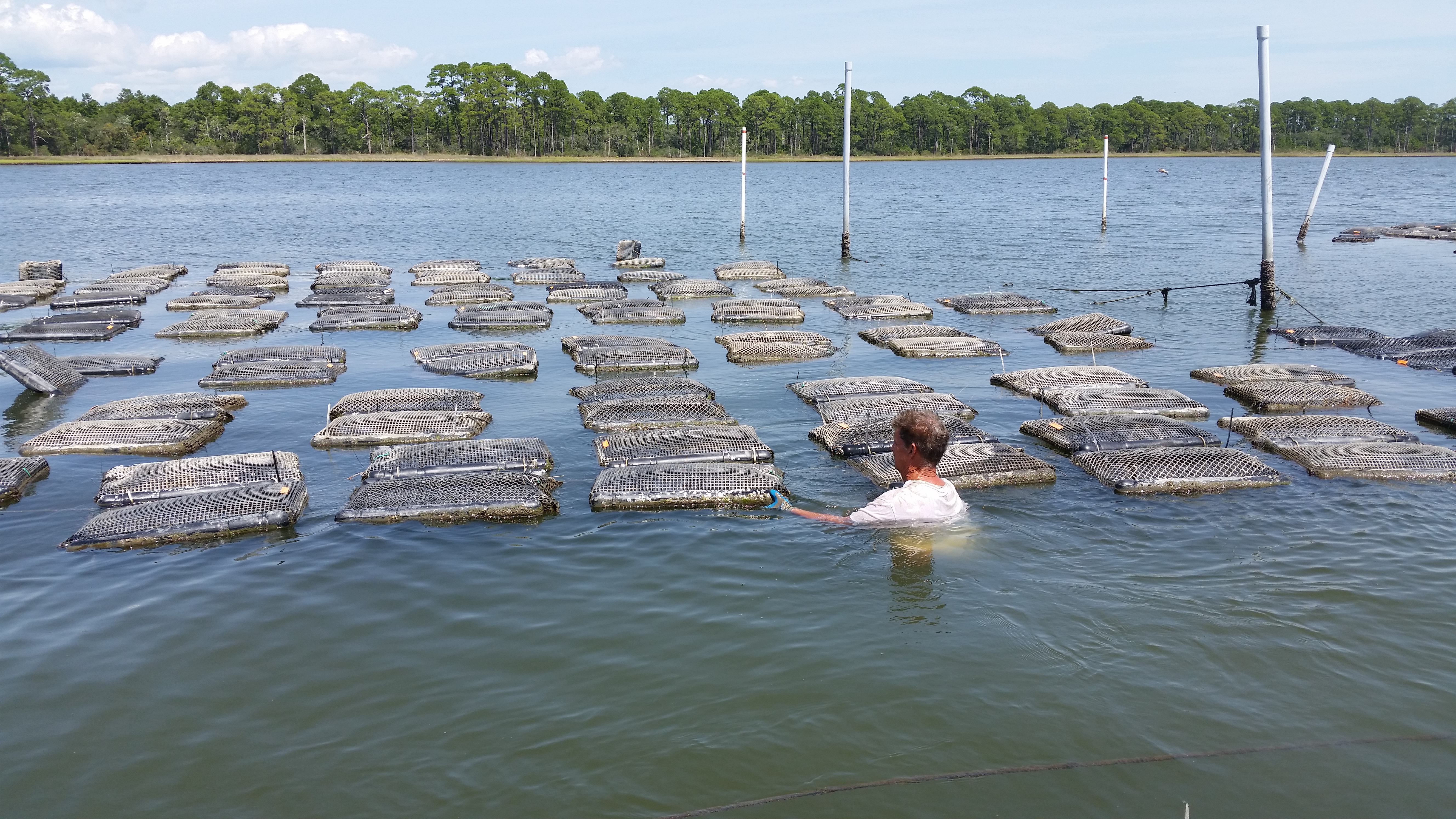
by Erik Lovestrand | Feb 2, 2018
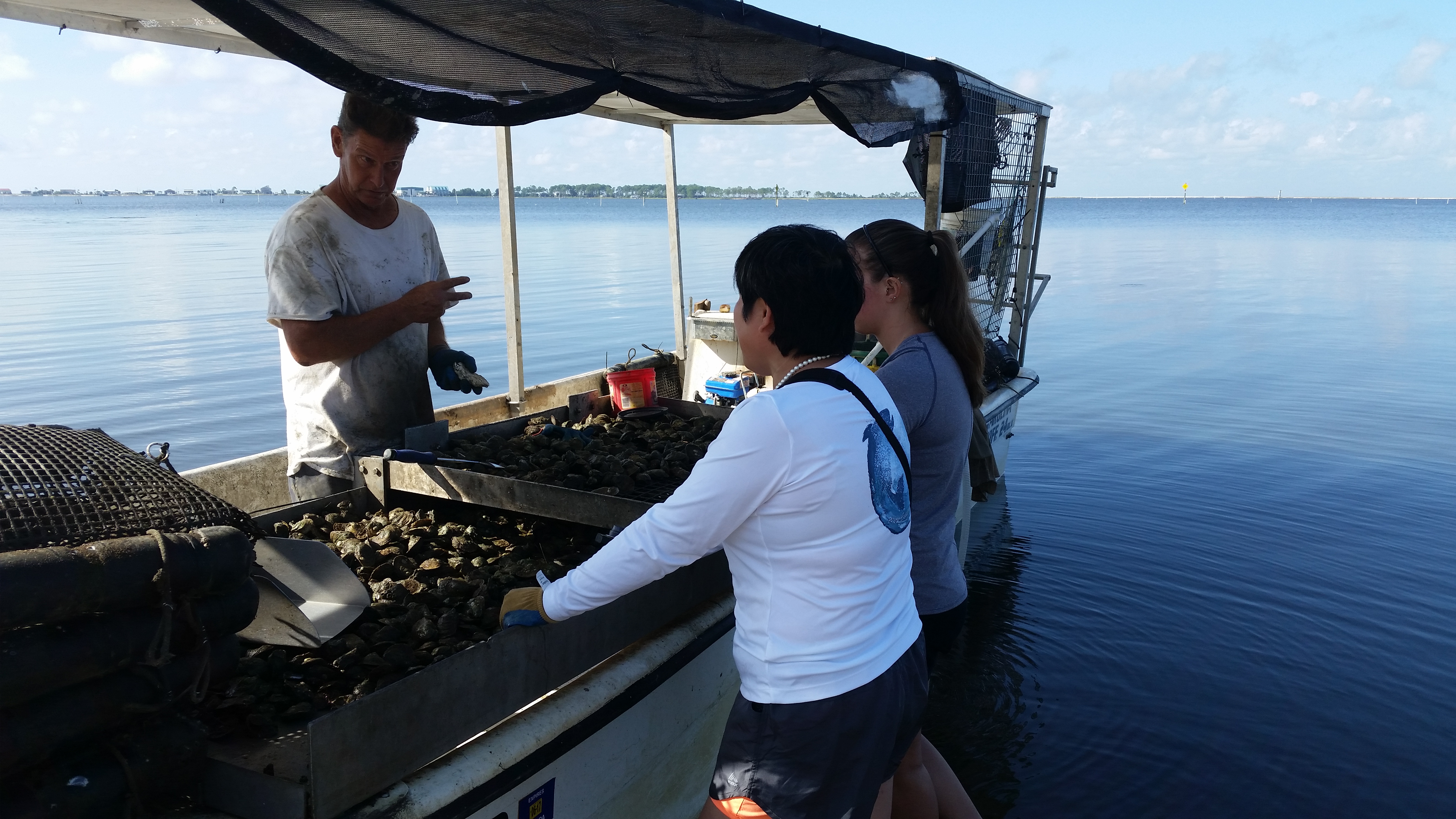
Sorting and re-caging take place on-site at the lease
Photo: Erik Lovestrand
There are a number of parallels than can be drawn between shellfish farming and traditional forms of agriculture that take place on the land. The most obvious similarities are the amount of hard work, grit and faith that are required of the farmer on land or sea. In spite of this there are many “salty” farmers in the Florida Panhandle who have mustered the faith requirement and are now putting in the hard work necessary to help build this budding industry in the Southeastern U.S.
Market demand for quality oysters has continued to outstrip available supplies for several years of late. This has been due in part to better marketing strategies employed by growers as well as clientele becoming aware of the health benefits of fresh oysters; a great supply of important vitamins and minerals, including vitamin C and B vitamins, zinc, selenium and iron. However, supply/demand ratios are not the only important factor in developing a thriving oyster aquaculture industry. Also required, is the necessary infrastructure to support the grower’s equipment needs, enough sources of baby oyster “seed”, a reliable refrigerated transportation network for live shellfish, and the support of regulatory agencies in making water leases available in suitable growing areas.
Fortunately, the stars seem to be aligning for many of these industry-growth necessities and the business of oyster farming is gaining a firmer foundation to build upon. One of the important milestones for Florida was the approval of “full-water-column” leases, which allows the use of floating oyster cages or bags. Previously, oysters were required to be grown on the bay bottom and this made them susceptible to higher levels of predation from crabs and snails and severe biofouling (barnacles and algae) on the exterior of the mesh bags. Heavy biofouling reduces the water flow through the oyster’s growing environment, thus the available food for this filter feeding bivalve.
One critical need for this industry is the availability of quality “seed” (baby oysters) to put in the growing waters. Seed oysters are supplied by hatcheries where oyster brood stocks are spawned and babies are raised to the necessary age for grower needs. Some growers use baby oyster larvae that have not settled and attached yet. These “eyed larvae” are put in a tank with old oyster shell and allowed to attach on the shells, which are then deployed at a lease site. Other growers use seed that has already attached to a small particle of crushed shell and are sold as individual oysters to be placed in grow-out bags or cages. The more recent development of oyster stocks with 3 sets of chromosomes (triploids) have provided growers with an oyster that gets to market size faster. Triploid oysters are infertile and do not use energy for spawning, thereby putting more energy into shell and tissue growth. Federal and state laws also govern where growers can buy their seed in an effort aimed at stopping the spread of shellfish disease from one body of water to another (i.e. Atlantic to Gulf of Mexico, etc.).
Even if all of the hardware and infrastructure is in place, there is still one other factor that plays a significant role in whether an oyster farmer will be successful. Just like the dairy farmer, the cattle rancher, the cotton or peanut grower, or the blueberry producer; backbreaking labor is necessary for many stages of the production cycle. Oyster growers work their leases either bending over the gunnels of a boat or actually being in the water, lifting heavy bags or cages of shellfish, sorting by size, re-caging, and moving lots of materials to and from the lease area. True grit and a dogged determination to stay on top of things, regardless of unpleasant conditions, are vital to raising a successful crop of oysters. And by the way, don’t forget that Mother Nature will have the final word. As all farmers know, they are required to be a good listener when she speaks.

by Erik Lovestrand | Aug 25, 2017
Many species of animals go through dramatic swings in population numbers over time. For some, these fluctuations are related to the dynamics of a natural symbiotic connection such as a predator-prey relationship. A classic example of this is the famous snowshoe hare/lynx model taught to all wildlife ecology students. The lynx numbers follow the hare numbers with a lag in the population upswings and downswings. For other species, it may simply be related to changing environmental conditions that they either do not tolerate well or that they thrive in. This is primarily the case with our panhandle bay scallop populations from year to year. During the time I’ve lived in North Florida I’ve experienced both ends of the spectrum during local scallop seasons. Some years, you can limit-out as fast as you can pluck them from the sea grass bed. Other times, the old adage of “finding a needle in a haystack” comes to mind. Over the past few years we have experienced some of these dramatic swings for various reasons.
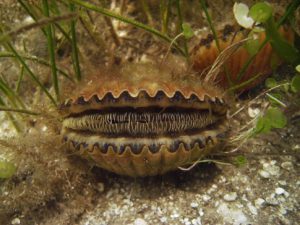
Bay Scallop Argopecten iradians
Bay scallops are mostly an annual species, with spawning taking place as water temperatures drop quickly during fall cold fronts. Harvest numbers the following summer are a result of larvae that matured in a single season. Occasionally, you will find an old “mossy-back” that is significantly larger and likely a holdover from the previous season. During spawning, a single scallop can release millions of eggs but very few survive to adulthood and throughout their brief lifespan they are susceptible to many mortality factors.
Predation by crabs, sea stars and several species of marine snails takes a toll but is generally not the driving force in significant declines.
One factor that does have population-level impacts is the amount of rainfall locally. Too much freshwater will create physiological stress and kill scallops over large areas. They can also be hammered by extreme heat or cold events due to their nature of inhabiting relatively shallow coastal waters. Other population pressures may not be so obvious because they sneak up on scallops gradually rather than happening all of a sudden. Factors such as propeller scarring in seagrass beds and siltation from terrestrial runoff or human activities, can have a cumulative effect that gradually degrades the seagrass habitat where scallops live. Another factor that can cause near-extinction of local populations is the occurrence of harmful algal blooms such as red tide. The toxins produced by these marine dinoflagellates will kill fish, marine mammals and shellfish alike. This is what happened to the scallops in St. Joseph Bay during the fall of 2015 when a red tide bloom killed most of the spawning population.
A more recent event in St. Joseph Bay, that put a damper on the 2017 season, was a bloom of a different marine dinoflagellate species known as Pseudo-nitzschia. This organism can produce a toxin known as domoic acid which can cause amnesic shellfish poisoning in humans. Thankfully, it is not expected to harm the shellfish themselves and next season may be a real bumper year. That is, if everything else that can go wrong for a scallop decides to give them a bit of a break. When environmental conditions are good, it is astounding what Mother Nature will provide. Put on your snorkel gear and check it out! For information on seasons and more detailed biology visit the Fish and Wildlife Research Institute’s webpage here. For some tasty recipes check out the Fresh From Florida page here.












